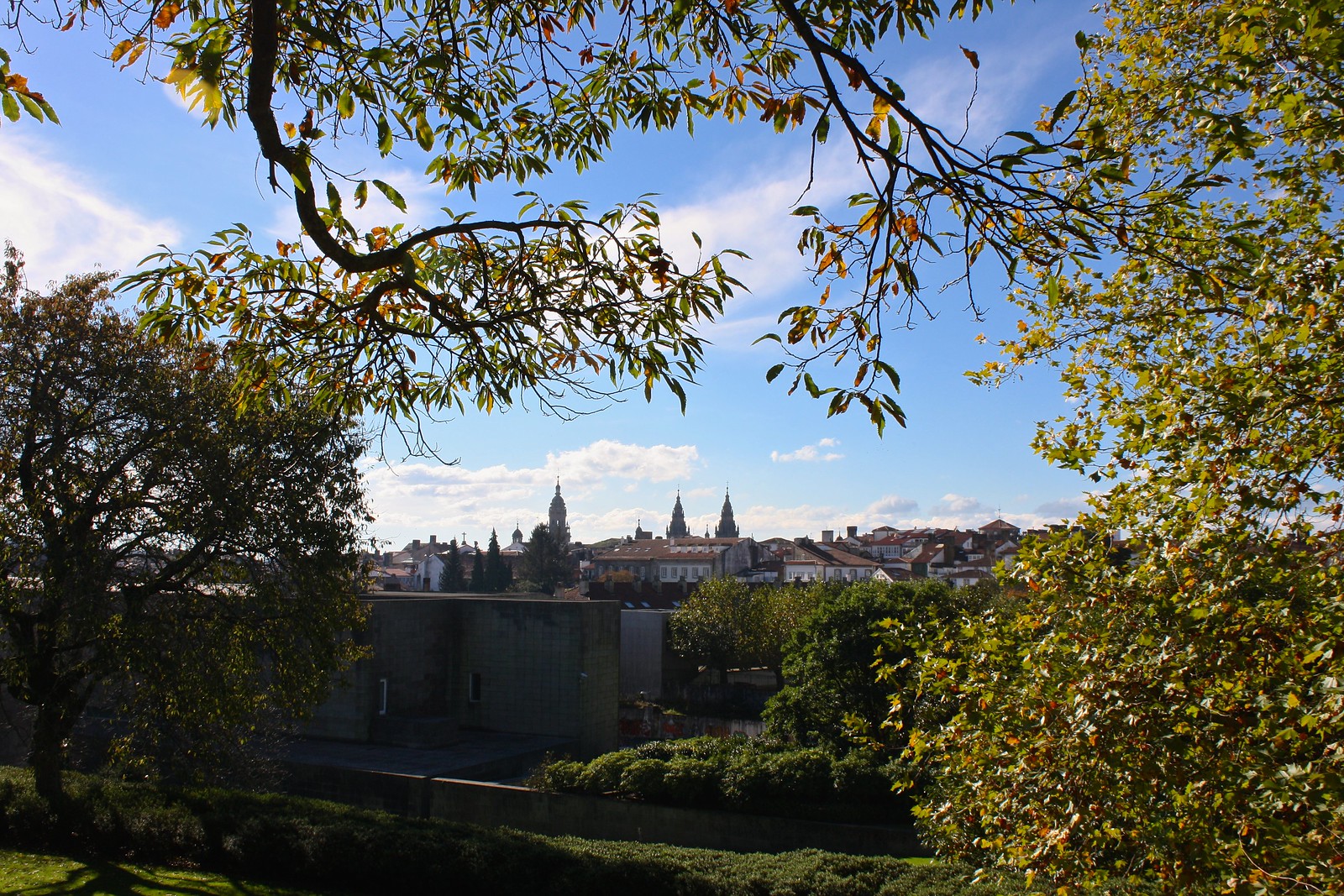Photo Post: Santiago de Compostela’s Bonaval Park
 |
| View of the cathedral |
I know, I know, I’ve been on a big city-parks-of-Santiago kick lately on the blog. Last year I talked about the Alameda (the main public park) and Belvís (basically my backyard), and in the past few weeks I’ve highlighted the Sarela River Trail and Galeras Park. These green spaces amount to one of Santiago de Compostela’s greatest assets and give folks who live here a way to exercise, relax, and meet up with friends and family.
 |
| Triple staircase in the Museo do Pobo Galego |
Today I’d like to turn the spotlight on Bonaval Park, situated just outside the old town to the northeast. For centuries, the land here belonged to the monastic community of San Domingos de Bonaval, but in 1837 it was confiscated by the Spanish state during the anti-clerical desamortización de Mendizábal. The Baroque monastery then passed to the city government. Today, Bonaval is anchored by the Museo do Pobo Galego, which offers an ethnographic look into Galician culture and traditions. The museum’s star attraction is a bewildering spiral staircase in which three separate flights of stairs intertwine.
In a city dominated by Romanesque and Baroque architecture, this monastery-turned-museum houses a rare Gothic church. Whether you come here on a dreary, overcast afternoon or a warm, sunny morning, you’re sure to experience a sanctuary filled with light pouring in from those pointy Gothic windows. In one of the larger side-chapels, the Pantheon of Illustrious Galicians is the resting place of such significant Galician artists and writers as Rosalía de Castro and Castelao.
A rather spooky side of the park centers on what was first the monastery’s cemetery and later the municipal one for well into the 20th century. Extending right behind the old cloisters, hundreds of empty, whitewashed niches are where you’ll typically see folks running, walking their dogs, or crawling over the stone constructions. From the grassy field above this former cemetery you can take in panoramic vistas of the old town and the cathedral: the perfect backdrop for an early-afternoon picnic. (Provided it’s sunny, of course!)
Further up the hill, mowed lawns give way to thick groves of oak and chestnut trees. When I first moved to Santiago two years ago, Bonaval wasn’t even on my radar. But as the seasons went by, I found myself taking visiting friends here to escape the crowds…and having lazy picnics in the warm spring sun.
What was your favorite picture from this post? Do you know of any other public parks with such a rich history as Bonaval’s? Share what you know to the discussion below!